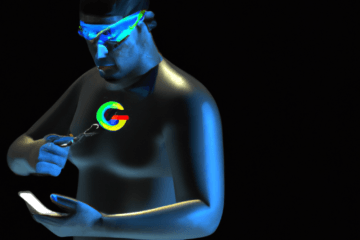The gaming industry has seen a lot of technological advancements over the years, and one of the latest developments is the integration of non-fungible tokens (NFTs). NFTs are digital assets that represent ownership of a unique item or piece of content. They have gained a lot of attention in recent years, particularly in the world of art and collectibles. However, they are also beginning to make their way into the gaming industry, where they offer a lot of potential benefits for both gamers and game developers.

What are NFTs?
NFTs are a type of digital asset that are stored on a blockchain. Unlike traditional digital assets, which can be copied and shared, NFTs are unique and cannot be duplicated. Each NFT is associated with a specific piece of content, such as an image, video, or game item. When someone buys an NFT, they own the rights to that specific piece of content, and they can sell it or trade it just like any other physical asset.
Benefits of NFTs in the gaming industry:
The gaming industry has a lot to gain from the integration of NFTs. Here are some of the most significant benefits:
-
Ownership and rarity:
One of the main advantages of NFTs is that they allow gamers to truly own their in-game items. In traditional gaming, players might spend hours or even days grinding to obtain a rare item, only to lose it if their account is hacked or if the game shuts down. With NFTs, however, players can truly own their items and can sell or trade them as they see fit. This gives gamers a sense of ownership and control that is often lacking in traditional gaming.
-
New revenue streams:
NFTs also provide a new revenue stream for game developers. By creating unique, rare, or special in-game items, developers can sell them as NFTs and earn money from the sales. This incentivizes developers to create more interesting and engaging content, as they can directly profit from it.
-
Community engagement:
NFTs also provide a new way for game developers to engage with their communities. By creating unique NFTs, developers can foster a sense of community around their games. For example, they might create limited-edition NFTs that are only available to players who complete certain tasks or achieve certain milestones within the game. This encourages players to engage more deeply with the game and with each other, building a more vibrant and engaged community around the game.
-
Cross-game compatibility:
Finally, NFTs can also provide cross-game compatibility. If a player owns an NFT that represents a particular in-game item, they can use that item in any game that supports the same blockchain. This provides a new level of interoperability between games, allowing players to carry their items and assets from one game to the next.
Examples of NFTs in the gaming industry:
Several games have already begun experimenting with NFTs. Here are a few examples:
-
Axie Infinity:
Axie Infinity is a blockchain-based game that allows players to collect, breed, and battle creatures called Axies. Each Axie is represented by an NFT, which can be traded or sold. Players can earn cryptocurrency by playing the game, and they can use that cryptocurrency to buy and sell Axies and other in-game items.
-
The Sandbox:
The Sandbox is a virtual world where players can buy and own plots of land, which they can use to create their own games and experiences. Each plot of land is represented by an NFT, which gives the owner the right to use and develop the land as they see fit.
-
Gods Unchained:
Gods Unchained is a collectible card game that uses NFTs to represent each card. Players can buy and sell these cards on the blockchain, and they can use them to compete in matches against other players. The rarest cards can be worth a significant amount of money, providing players with a new avenue for earning income.
-
F1 Delta Time:
F1 Delta Time is a racing game that uses NFTs to represent cars, drivers, and tracks. Players can buy and sell these NFTs, and they can use them to compete in races against other players. The rarest cars and tracks can be worth a significant amount of money, creating a secondary market for these items.
Challenges and concerns:
While NFTs offer a lot of potential benefits for the gaming industry, there are also some challenges and concerns to consider. Here are a few:
-
Environmental impact:
NFTs are stored on the blockchain, which requires a lot of energy to maintain. Some critics have raised concerns about the environmental impact of NFTs, particularly as more games begin to adopt them.
-
Security risks:
Storing digital assets on the blockchain also presents some security risks. If someone gains access to a player’s private key, they can steal their NFTs and sell them on the secondary market.
-
Lack of regulation:
Finally, NFTs are still largely unregulated, which could lead to scams and fraud. It’s important for players to do their research before buying NFTs, and for game developers to be transparent about their NFT offerings.
Conclusion:
NFTs have the potential to revolutionize the gaming industry, offering players new levels of ownership, community engagement, and cross-game compatibility. However, there are also challenges and concerns to consider, particularly around environmental impact, security risks, and lack of regulation. As more games begin to adopt NFTs, it will be important for players and developers to work together to ensure that these digital assets are used responsibly and ethically.

